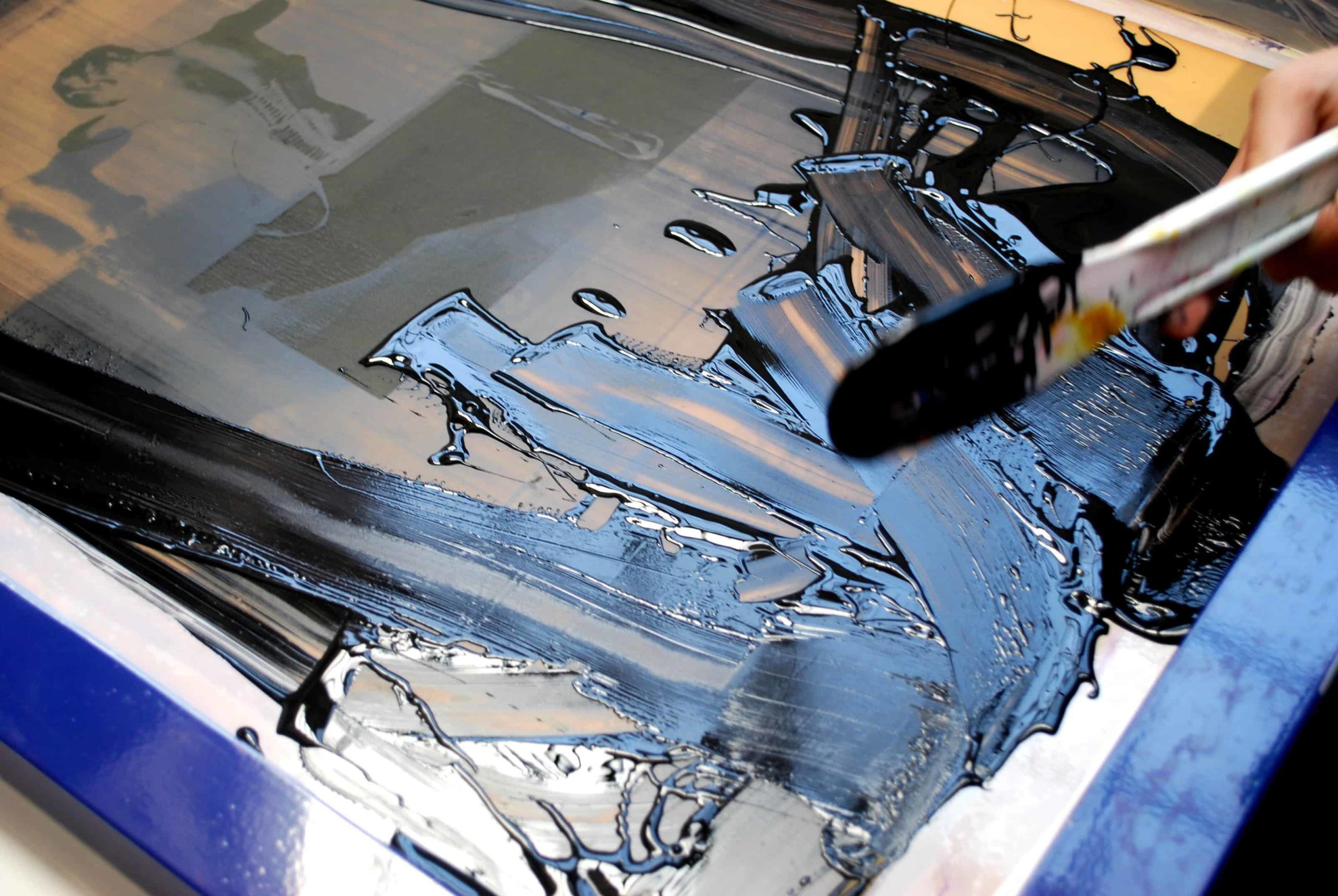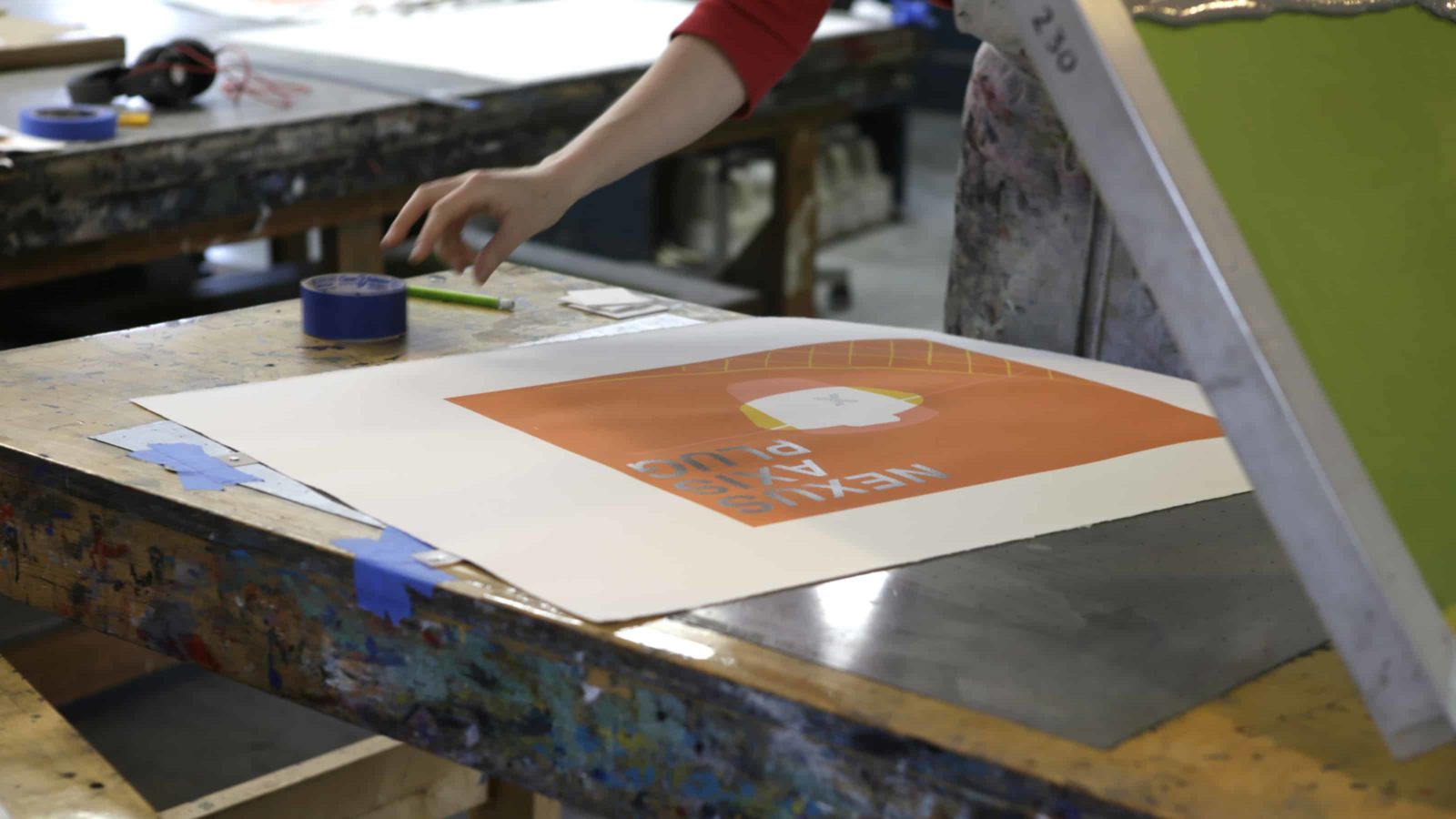It was a cold, bright morning when I walked into Shire City Sanctuary with a silk screen under my arm. The pattern on the screen is drawn in a creamy translucent film, but held up to the light it still shows a kind of poster sketch of Pittsfield, with the circle and elm tree and wagon, marble buildings and mountain lakes. Friends found it in a New York City antiques shop, and I brought it with me to a workshop at the end of winter.
Crispina ffrench had built a maker space for screen printing and fiber art in the former Notre Dame church on Melville Street, and on Thursday nights she would pull screen prints and invite anyone curious to drop by and watch, and maybe pick up a squeegee.
The weekend workshop I came to was a unique event, and I was lucky. Three artists — Crispina, Pittsfield artist and printer John Ahlen and Alexandra “Cate” Crowley — spent two days helping a small group of students each to create a batch of prints. And it was all new to me. Easing shapes out of cardboard with an x-acto knife, and getting soaked in spray at the set tub … I haven’t gotten to play around like this in a studio space since long about eight grade.

An artist applies ink to a silkscreen to make a print. Creative Commons courtesy photo
I didn’t print with my silk screen, because I didn’t want to risk damaging it, but it did give me a place to start — with mountains. Screen printing, at its simplest, means making a stencil, a solid shape with openings, and drawing a smooth film of ink across the openings. Crispina explained two ways to do this: You can begin with a solid background and cut shapes out of it, or you can begin with a solid shape and create a background around it.
John Ahlen showed us a print he had made, a rank of hazy mountains shading from deep night blue almost to mist. I took a plain sheet of paper and tore it unevenly, as he told me, and there I had a distant ridge line. Crispina gave me a sheet of cardboard that tore in jagged steep lines, and here were fir and spruce trees on the hill.
John Ahlen showed us a print he had made, a rank of hazy mountains shading from deep night blue almost to mist.
Another scrap gave me a snow field, and a little teasing with a knife gave me a small house at the far side of the meadow. I cut the shape of the roof all the way through, so the paper I printed on would show as snow on the roof.
To turn these into stencils, we put them on a screen treated with a bright pink light-sensitive emulsion, and then we exposed the screen to light, which hardens the emulsion everywhere except underneath the paper shapes that shade it. Then we propped the screen in the broad sink and doused it with a spray nozzle to wash off the still-soft emulsion where the paper had been, and there were my ridges, one uneven shape after another.
The ink is thick as double cream, and we mixed colors sparingly in small cups, cautiously dripping in color to get the right shade of dusky purple, deep blue and snow shadow.
The ink is thick as double cream, and we mixed colors sparingly in small cups, cautiously dripping in color to get the right shade of dusky purple, deep blue and snow shadow.
Around me, one classmate printed the golden underlayer of a tea-cup and another prepared the first of several screens for an impressionistic image of trees and shadows, stream and snow.
I learned that pulling a squeegee over a screen to spread ink evenly takes strength, agility and practice. And also stamina. I remember the feel of ink on my hands, the comfortable soreness that comes with repeating a process, Cate’s patience in working with me — as she adjusted the way I stood and held the tool and added transparent medium to solid ink to let the solid color shade into lighter and lighter blue.
I made my mountain range a broadsheet for a poem by the old friend who gave me the silk screen. She wrote about walking the hills in sugaring season, with the wood smoke and the sweetness in the steam, in the early, raw, wet spring. And I tried to print the hills in shades of purple and slate, the way they look tonight in the hour of light we’ve just recovered from daylight savings time.

